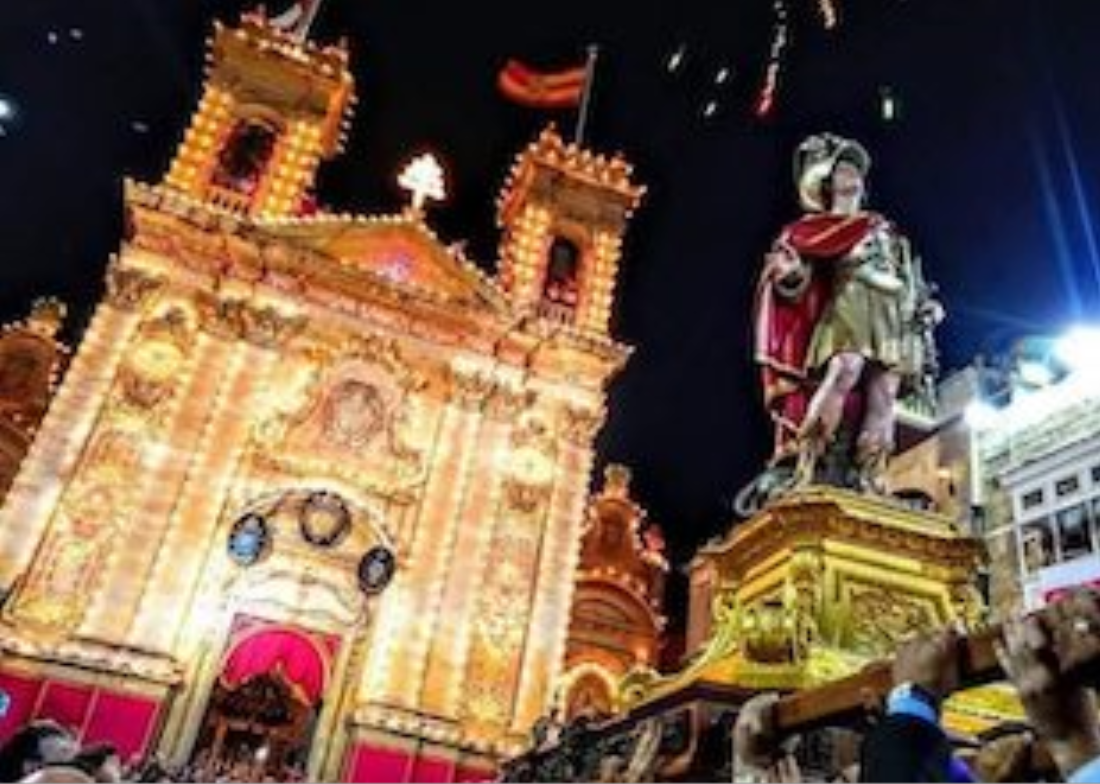From Tuesday to the Third Sunday of July
The third Sunday of July is always festa day. It is Gozo’s annual St George’s Day. On this day, the bedecked city of Victoria is packed with cheerful crowds. Locals compete for space with other people who flock from the surrounding villages, or cross over from the island of Malta, the latter coming mostly from Ħal Qormi where St George is also Patron Saint.
Of course, Gozo celebrates St George on his proper day as well, which falls in April. April 23rd is St George’s Day all over the world and his festive memory is kept in Gozo and all over the Maltese islands as it is held in the homes and churches of the Christian East and West, in Istanbul, Canterbury and Rome, as well, very probably, as in the most distant regions of the globe.
St George’s Day is perhaps not kept in all the regions of the world in the same manner, nor does the Martyr’s memory necessarily convey a uniform religious significance. In our case, both April 23rd and the Third Sunday of July are primarily religious festivities although they have different, albeit complementary, emphasis. While the April day is exclusively devotional and practically confined to the day’s internal church celebrations, the July festa is spread out over several days of external festivities, cultural fare and popular entertainment. Indeed, Gozo’s summer St George’s Day stretches for no less than three weeks.
Every Maltese town and village has its festa. At times a village may have more than just one, depending on the number of parish churches or saintly patrons (within the same parish church) with whom different localities or social groups may identify. Every festa, however, strives for the biggest church pomp and pageantry, and provides for the wildest external revelry possible. Quite aptly the Maltese refer to these two festa dimensions as il-festi ta’ ġewwa (internal festivities) and il-festi ta’ barra (external festivities). The former consist of devotional actions and liturgical ritual, and the latter comprise street decorations, band marches and fun events such as horse racing and youth parties.
However each festa has its peculiarities and its distinctive aspects. This is certainly the case with St George’s Festa. St George’s Festa is distinctive on two counts: It has retained, without interruption, the traditional format of the liturgy, it has nevertheless continued to be the most innovative in keeping abreast with a changing society.
